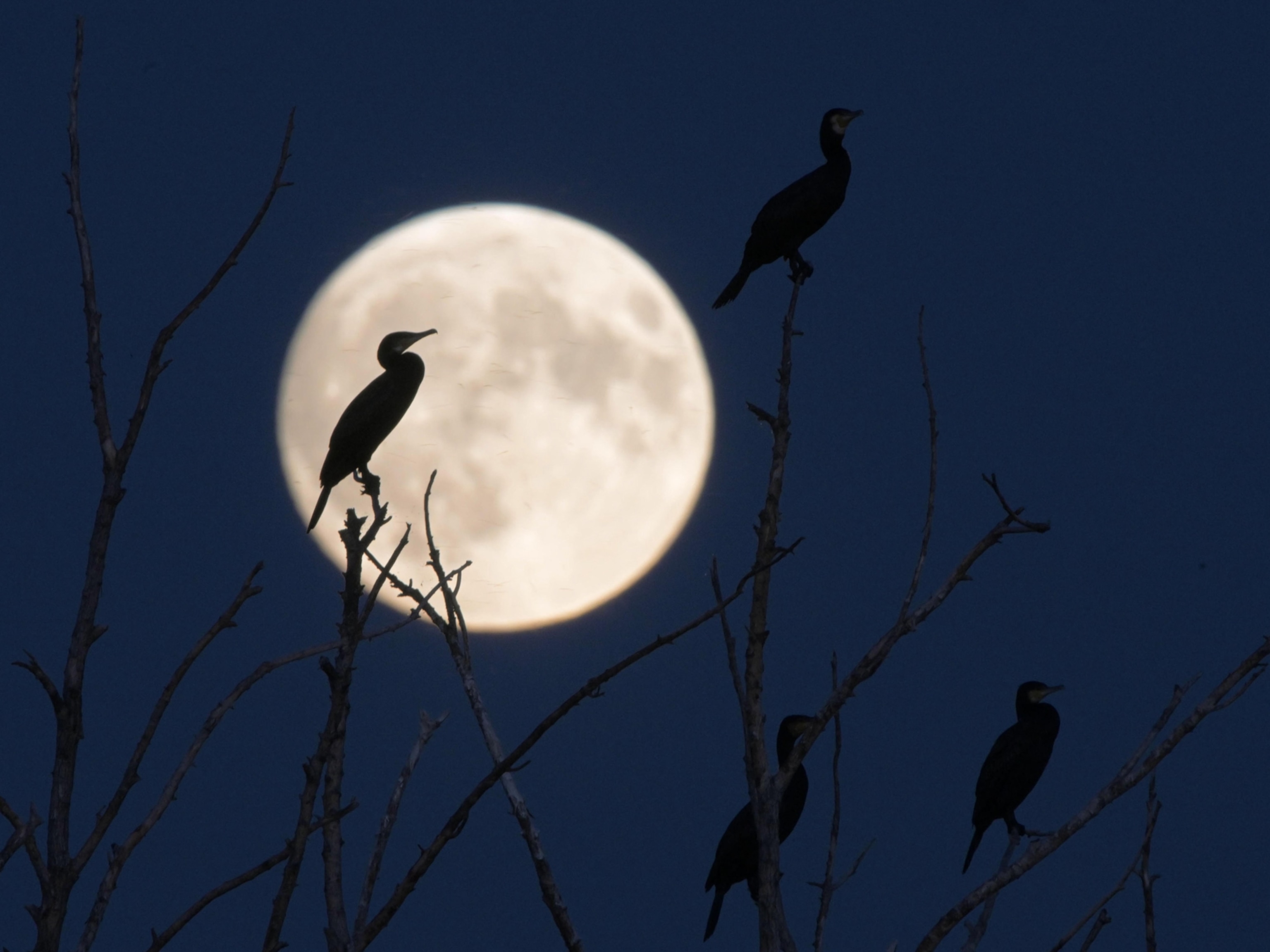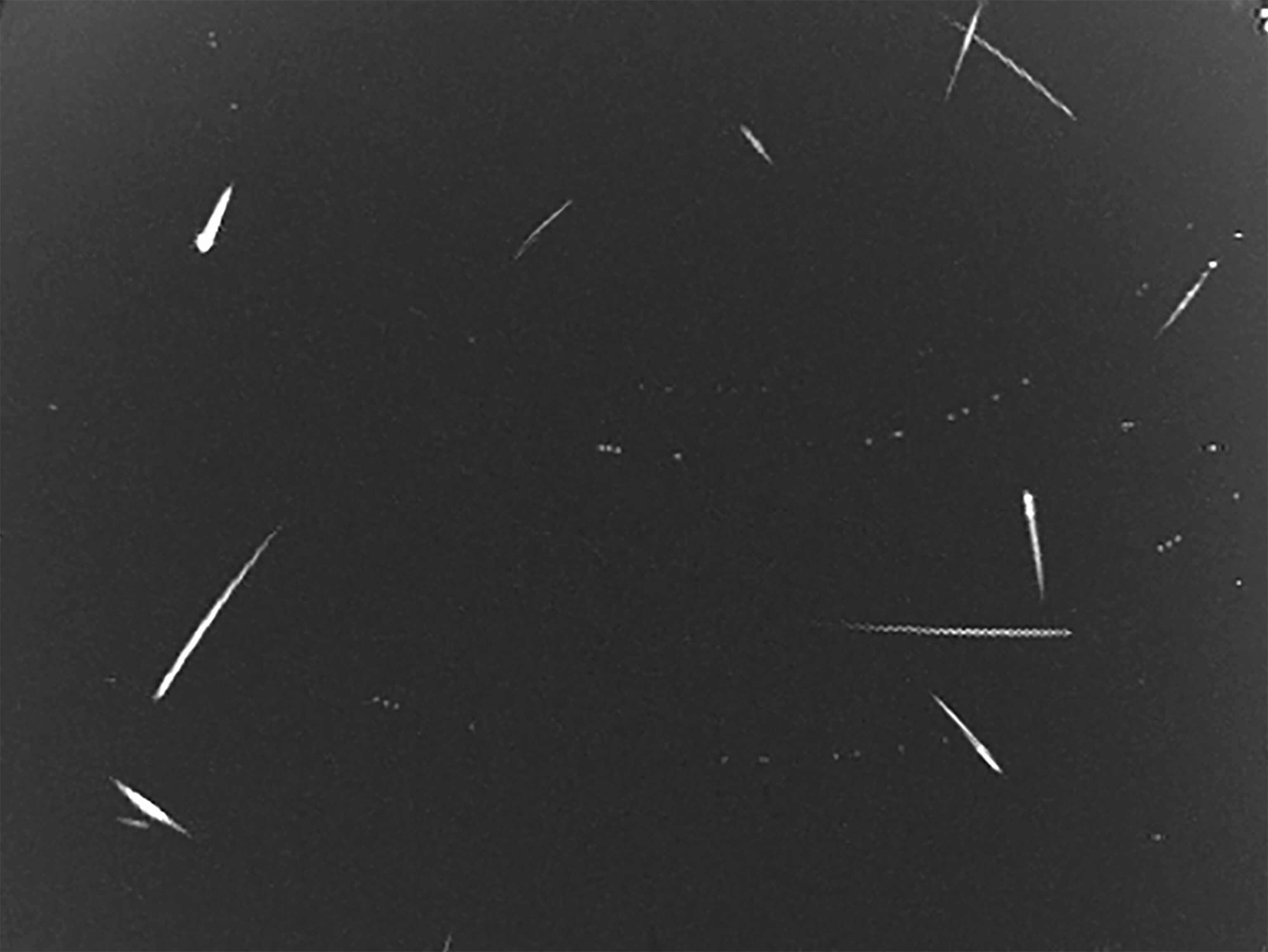
This Week’s Night Sky: See an Asteroid Pass and Meteors Peak
Also this week, two planets form a triangle with the moon and a star cluster goes into hiding.
Asteroid Encounter. Late night on August 9 offers a great opportunity to spy on the second largest worldlet between the orbits of Mars and Jupiter: the asteroid Pallas.
Sky-watchers using binoculars and small telescopes should be able to pick up Pallas in the southeastern sky, shining at magnitude nine. It will be passing conveniently between the bright naked-eye star Enif and M15, a stunning globular star cluster that’s 33,000 light-years away.
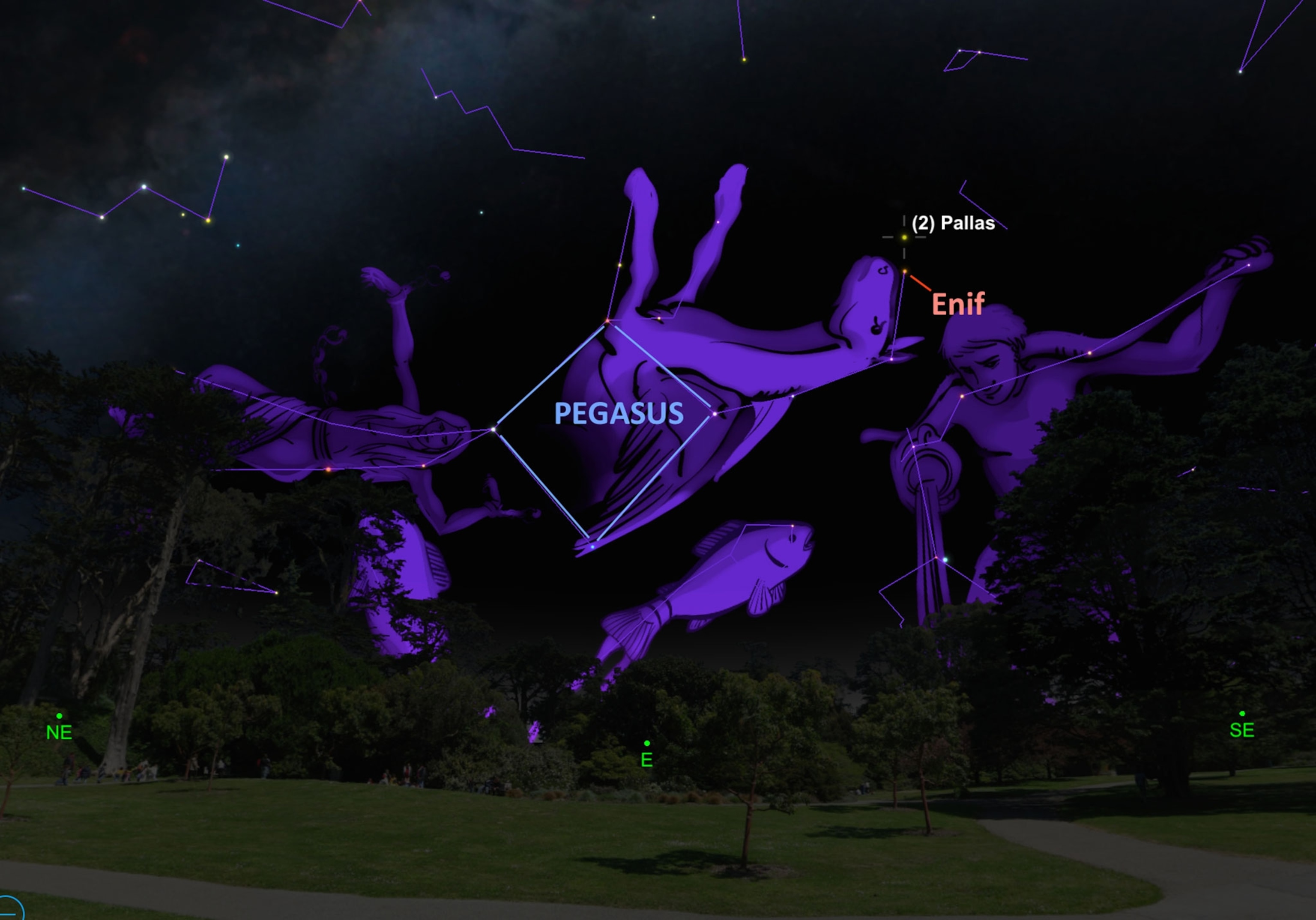
Seen from Earth, Pallas will be positioned about three degrees northwest of Enif, which marks the nose of the constellation Pegasus, the mythical flying steed.
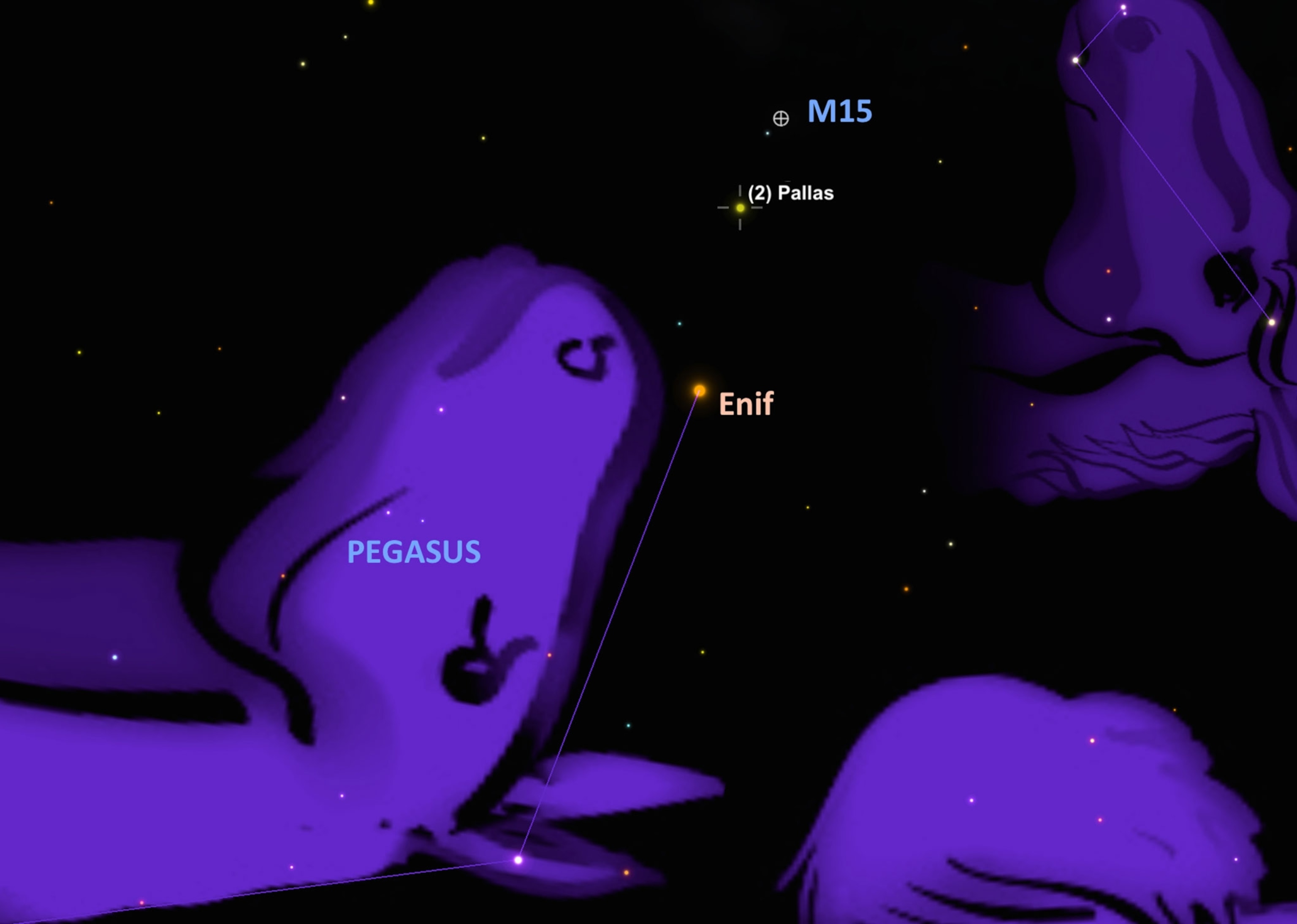
It will also be one degree southeast of the M15 cluster, equal to about two lunar disks apart. Through binoculars under dark skies, the cluster looks like a tiny fuzzy patch of light near Enif—akin to a pesky fly buzzing near the nose of the winged horse.
Pallas is just 318 miles (512 kilometers) wide, and so even with optical aids it will appear as no more than a point of light. Because many of the objects seen through binoculars can look the same, the best way to identify an asteroid is by its telltale motion. Sketch the positions of about a dozen stars in your field of view. A couple nights later, observe the same star field once more and make another sketch. The one “star” that has moved will be Pallas.

Cosmic Triangle. Soon after sunset on August 11, turn your attention to the gibbous moon forming an eye-catching, equilateral triangle pattern with the brilliant planets Mars and Saturn. Any two objects in this pattern will be separated by only seven to eight degrees, a spacing less than the width of your clenched fist held at arm’s length.
Perseids Peak. Also on August 11 and into the predawn hours of August 12, the year’s best meteor shower will be reaching its most intense activity. From a dark location away from city lights, it may be possible to catch as many as a hundred shooting stars every hour.
This year Earth may even be slamming into a particularly dense cloud of debris left behind by the shower’s parent, the comet Swift-Tuttle. That may lead to even higher hourly counts, maybe up to 150 shooting stars an hour!
Either way, the Perseids should put on a great show from the night of August 12 into August 13, too. Stay tuned for a detailed viewers' guide coming later this week.
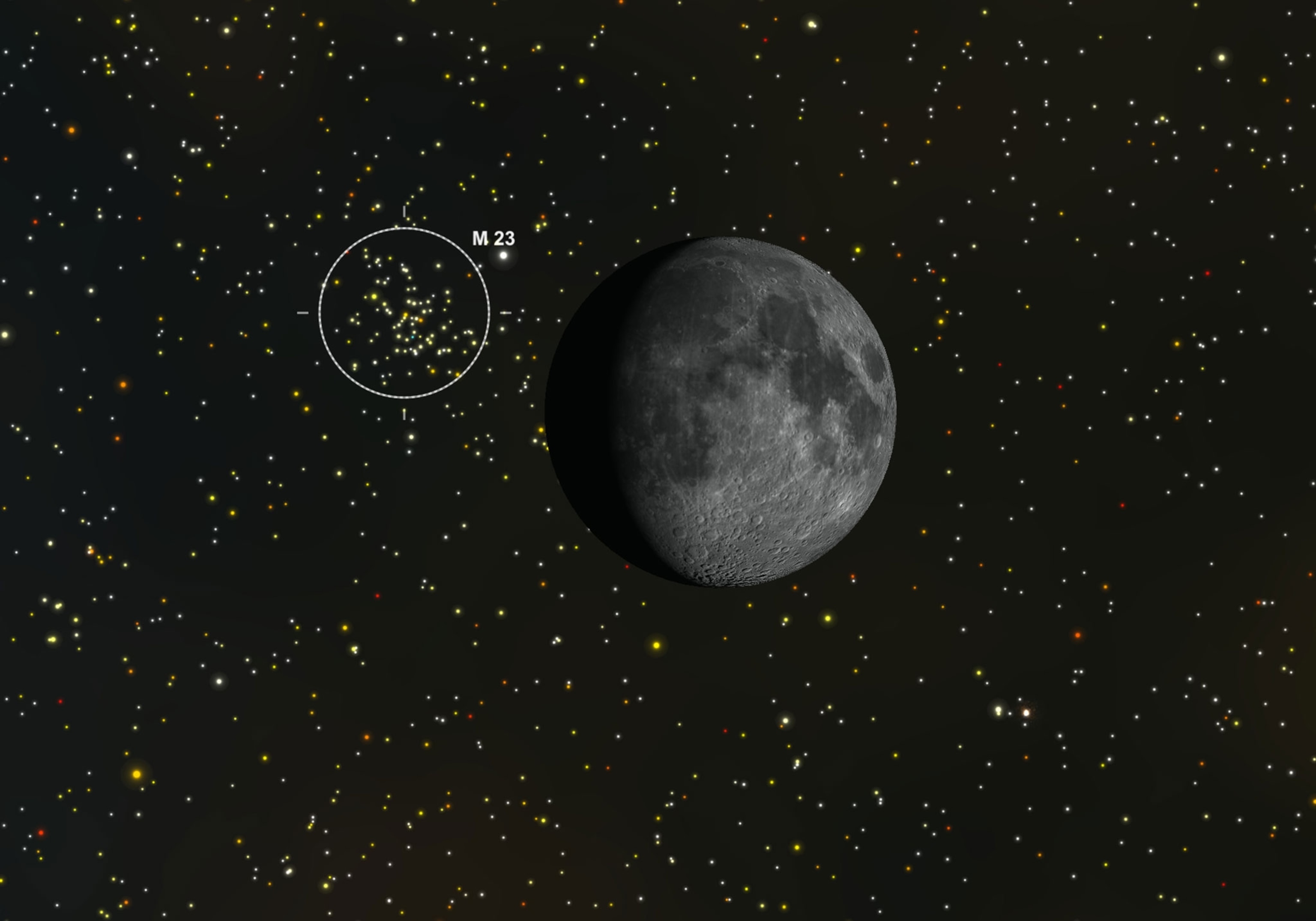
Jewel Box Eclipse. Late night on August 13, keen-eyed sky-watchers with binoculars and telescopes trained near the gibbous moon should be able to pick out a beautiful star cluster known as M23.
This open cluster lies 2,000 light-years from Earth, nestled within the crowded star field of the constellation Sagittarius, the archer. It takes up as much space in the sky as the disk of the full moon, but its 150 stars actually span about 20 light-years.
For lucky observers in North America, except those on the West Coast, the moon will appear to occult, or hide, M23 in the early evening. Begin your watch as soon as darkness falls. The cluster will appear to wink out as it slips behind the unlit portion of the lunar disk. However, the moon will set in the southwest before the cluster once again peeks out from the brightly lit side of the moon.
Clear skies!
Andrew Fazekas, the Night Sky Guy, is the author of Star Trek: The Official Guide to Our Universe. Follow him on Twitter, Facebook, and his website.




